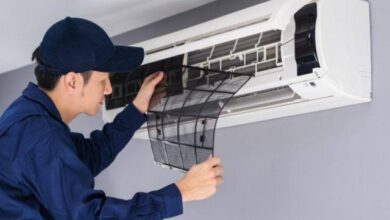How Smart Thermostats Can Help Prevent Costly AC and Furnace Repairs

Homeowners today have access to technology that goes far beyond simple comfort control, and one of the most effective tools is the smart thermostat. Unlike traditional models, these devices offer advanced features such as learning user habits, monitoring energy use, and alerting families to potential problems within their HVAC systems. This combination of convenience and awareness helps protect both air conditioning units and furnaces from unnecessary wear and damage. By providing better regulation and oversight, smart thermostats help reduce repair costs while improving overall efficiency. Their role extends from everyday comfort to long-term system preservation.
Early detection of potential issues
Smart thermostats offer a crucial safeguard against costly repairs by detecting potential issues early. Many models are designed to monitor system performance and notify homeowners when unusual patterns arise, such as inconsistent heating or cooling cycles. These alerts allow problems to be addressed before they escalate into major breakdowns. For example, if a furnace begins short-cycling or an AC struggles to maintain consistent temperatures, the thermostat can detect these anomalies and notify the user. Homeowners can then schedule maintenance promptly, avoiding emergency calls and costly replacements. Families in places like Auburn often find these devices particularly useful during seasonal transitions, when HVAC systems are under the most strain. By offering this proactive approach, smart thermostats enable homeowners to protect their systems before minor issues escalate into larger expenses.
Reducing strain through efficient operation
Another way smart thermostats help prevent costly repairs is by reducing unnecessary strain on HVAC systems. Traditional thermostats may lead to frequent cycling or excessive runtime, which wears down components over time. Innovative models optimize operations by learning user schedules, automatically adjusting temperatures, and even incorporating weather forecasts into their programming. This balance ensures that systems only run when necessary, thereby minimizing wear and extending the life of critical components, such as compressors, motors, and fans. Over the years, this reduction in workload has translated into fewer breakdowns and a longer service life for both air conditioning units and furnaces. By preventing excessive strain, smart thermostats not only reduce repair needs but also improve the overall comfort and efficiency of the home.
Improving energy management and savings
Smart thermostats also help homeowners better manage energy consumption, which indirectly protects HVAC systems from overuse. Features such as energy usage reports, real-time adjustments, and mobile app control provide families with a clearer understanding of how their heating and cooling habits impact performance. By identifying patterns of excessive energy use, homeowners can adjust settings to reduce system demand. This type of management prevents equipment from being overworked while also lowering monthly bills. Systems that run more efficiently are less likely to overheat, freeze, or encounter problems that lead to expensive service calls. The combination of savings and reduced repair risks makes smart thermostats an attractive choice for households seeking to manage both their budgets and home comfort.
Enhancing maintenance and service scheduling
Routine maintenance is one of the most effective ways to avoid costly HVAC repairs, and smart thermostats make this process easier to manage. Many models are capable of reminding homeowners when it is time to change filters, schedule seasonal tune-ups, or check system performance. These reminders ensure that simple tasks, which are often overlooked, are completed on time to preserve system health. For instance, a clogged filter can cause significant strain on both air conditioners and furnaces; however, timely reminders can prevent such issues from occurring. By keeping households on schedule, smart thermostats support regular upkeep that minimizes the risk of major repairs. This proactive approach ensures that HVAC systems remain in optimal condition year after year.
Supporting long-term system reliability
The long-term benefits of smart thermostats extend beyond immediate savings and convenience. By consistently optimizing operation, monitoring system health, and promoting timely maintenance, these devices help extend the lifespan of HVAC systems. Fewer breakdowns mean less money spent on emergency service calls and a reduced likelihood of premature system replacement. Over time, the investment in a smart thermostat pays for itself through avoided repair costs and lower utility bills. Families also benefit from the peace of mind that comes with knowing their systems are being monitored and protected automatically. This ongoing reliability allows households to enjoy comfort without the constant worry of unexpected failures or significant expenses.
Smart thermostats have become an essential tool for modern homeowners seeking to protect their HVAC systems and avoid costly repairs. By detecting problems early, reducing strain, encouraging efficient operation, and supporting routine maintenance, these devices play a critical role in preserving both air conditioners and furnaces. Their impact extends from daily comfort to long-term savings, offering households an effective way to safeguard their investment in heating and cooling equipment. With proactive monitoring and intelligent operation, smart thermostats provide more than just convenience—they serve as a reliable defense against the financial and practical challenges of unexpected HVAC breakdowns.



